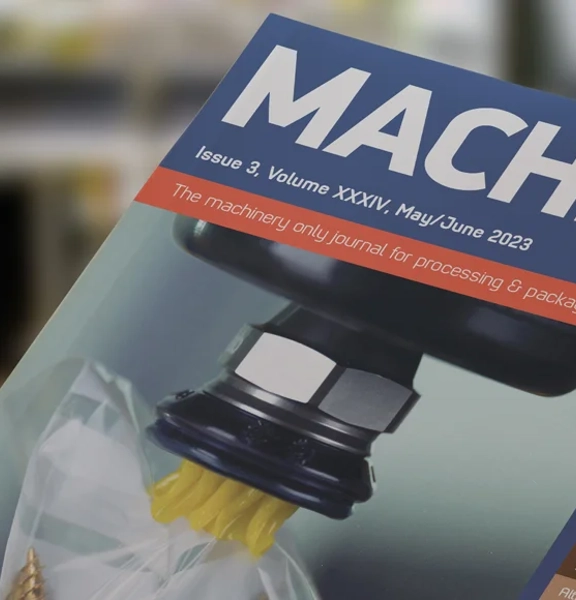Become a member
Take advantage of exclusive member benefits, world class events, networking and specialist support








 Become a member
Become a member 

13 November 2023
Since replacing its manual labelling processes, Reynolds Catering Supplies has overcome low quality label application and ongoing labour shortages.
The company is one of the UK’s best established food supply companies. With nine locations across the UK, and decades of experience, the business delivers high-quality fruit, vegetables, meat, fish, cheese and dairy to the food service industry, from pubs and restaurants to food outlets and contract caterers.
The core of the business is greengrocery, run from the operational base and company HQ in Waltham Cross. Delivering fresh fruit and veg to businesses of every size daily requires an efficient pick list system to sort orders into cardboard boxes or plastic totes, depending on customer preference.
Every day, Reynolds receives orders totalling circa 8,000 boxes and totes which need to be labelled at the start of the packaging line with pick lists that instruct staff which items need to be packed in which containers.
In the past, Reynolds relied on a very manual process to print and label each tote or box by hand at the start of each shift. The firm used desktop printers that were separate from the conveyor line to print the labels before a worker would take each label and apply it to the relevant pack manually.
This resulted in low quality labelling, with labels being poorly applied, incorrect, or falling off before they reached the pick lines. Due to labour shortages following Brexit and a drive for greater economic efficiencies, Reynolds turned to Cobalt to automate its entire labelling operation.
Cobalt implemented an automatic labelling solution capable of labelling both types of container – totes and boxes – correctly each time. A single machine labels both the front face and side face as they pass along an inbuilt conveyor. This posed several challenges. The different surface materials, differing angle of applications (with boxes being flat while totes are angled) and the different weight of the boxes themselves.
These challenges are dealt with by:
The machine is fed data from Reynold’s ERP system Infor M3. Pick lists are ordered within the ERP and sent to the print and apply machine along with instruction as to whether a box or tote is to be used. These are automatically fed onto the conveyor and a box-making machine sits ahead of the print and apply machine making up boxes in real-time as they are needed.
Infor holds the order data and makes up pick lists initially, deriving the order in which each box and tote needs to be packed and picked. This information is then sent to Loftware NiceLabel to prepare the labels and from there, integrates with the Cobalt machines to print and apply labels.
The team at Reynolds determined that more control over the process was needed, especially for more granular changes and for “on-the-fly” adjustments. As a result, the in-house business development team developed a secondary queueing system before the labelling occurs to allow for manually sorting the totes and boxes, prioritising the items that need to be sent out first and enabling further efficiencies down the picking lines.
This combination of technologies and understanding of operational requirements meant the Reynolds team was able to integrate Loftware NiceLabel into its ERP system to efficiently manage the queue at the beginning of the shift, creating an intuitive workflow for packing produce into the boxes and totes.
Secondary to the barcode labelling, each tote box is RFID tagged. This serves two purposes, with the data on the tags linked to the barcode data to ensure that the correct items are sent to the correct customer so that the totes can be accounted for properly when they return.
The finished system can print and apply labels on totes and boxes and label each at a speed of between 23 to 26 per minute while applying the labels in the correct orientation. A second machine sits in series with the first but is dormant – only being used if an error occurs with the first which would stop production.
As a result, the capacity of Reynolds’ production lines has increased greatly, with shifts starting later and ending earlier than previously and opening up the potential for fulfilling more orders as the business continues to grow.
The changes to their labelling system – and particularly the integration of Loftware NiceLabel into their ERP system – has allowed Reynolds to reduce the number of staff needed in this part of the picking line from five to just one, allowing staff to be re-deployed elsewhere in the operation.
The changes to Reynolds’ operation also brought about savings in space on the operations floor, as well as creating a calmer, more pleasant working environment.
Prior to implementing the Cobalt print and apply system, the process was extremely manual, with multiple people tearing off and sorting labels every single day, it was very time-consuming, and we needed to replace it with sensible, cost-effective automation. We’ve achieved that aim and there is now just one person who oversees that part of our operation.
Richard Calder, IT director at ReynoldsTel: 01270 539800
Website: www.cobaltis.co.uk